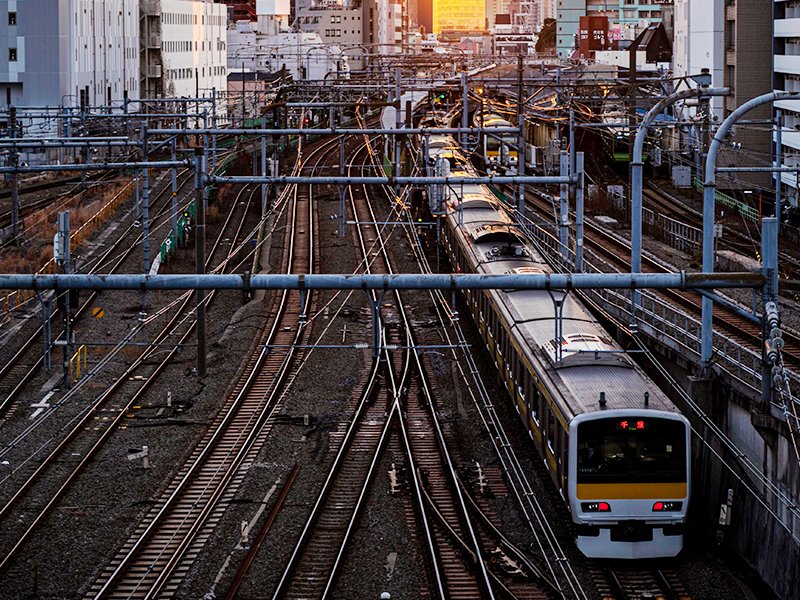Delhi, the bustling capital of India, is renowned for its rich history, vibrant culture, and dynamic economy. As the city continues to evolve and expand, efficient transportation infrastructure becomes increasingly crucial to facilitate connectivity and foster economic growth. Recognizing this imperative, the Delhi government has allocated a substantial sum of Rs 150 crore towards the development of Regional Rapid Transit System (RRTS) corridors. This strategic investment not only promises to enhance connectivity within Delhi but also holds the potential to catalyze the growth of neighboring areas, particularly Gurugram. In this comprehensive analysis, we delve into the significance of this initiative, its potential impact on connectivity, economic development, and the broader implications for the region.

I. Understanding the Regional Rapid Transit System (RRTS):
1.1. Concept and Objectives:
The Regional Rapid Transit System (RRTS) is a high-speed rail-based transportation system designed to connect various urban centers and satellite towns around Delhi-NCR (National Capital Region). Unlike conventional rail systems, RRTS offers faster travel times, reduced congestion, and enhanced reliability, making it an attractive option for commuters and businesses alike. The primary objectives of RRTS include:
– Improving regional connectivity
– Alleviating congestion on roads and existing rail networks
– Promoting sustainable transportation solutions
– Stimulating economic development along transit corridors
1.2. Key Features and Benefits:
RRTS corridors are characterized by several key features and benefits, including:
– High-speed trains capable of traveling at speeds up to 180-200 km/h
– Dedicated tracks separate from existing railway lines, ensuring faster and more reliable service
– State-of-the-art stations equipped with modern amenities and seamless intermodal connectivity
– Integration with existing public transportation networks, such as metro rail and bus services
– Reduced travel times, enhanced comfort, and improved safety for passengers
– Potential to unlock new opportunities for real estate development, commercial activity, and job creation along transit corridors
II. Significance of Delhi’s Investment in RRTS Corridors:
2.1. Addressing Transportation Challenges:
Delhi-NCR faces numerous transportation challenges, including traffic congestion, air pollution, and inadequate public transportation infrastructure. By investing in RRTS corridors, Delhi aims to address these challenges by providing a fast, efficient, and sustainable mode of transportation. This investment aligns with the city’s broader vision of promoting inclusive and sustainable urban development.
2.2. Boosting Connectivity and Accessibility:
The development of RRTS corridors will significantly improve connectivity within Delhi and its neighboring regions. Commuters will benefit from reduced travel times and enhanced accessibility to key destinations, including employment centers, educational institutions, and commercial hubs. Moreover, RRTS will facilitate seamless travel across different parts of the NCR, promoting integration and mobility.
2.3. Fostering Economic Development:
The infusion of Rs 150 crore into RRTS corridors represents more than just a transportation investment; it is a catalyst for economic development. By enhancing connectivity and reducing transit times, RRTS corridors will unlock new opportunities for businesses, industries, and real estate development along transit routes. Gurugram, in particular, stands to benefit from improved connectivity with Delhi, attracting investment, talent, and infrastructure development.
III. Impact on Gurugram’s Connectivity and Growth:
3.1. Strengthening Connectivity with Delhi:
Gurugram, often referred to as the “Millennium City,” is one of the fastest-growing urban centers in India. However, its growth has been accompanied by challenges related to transportation and infrastructure. The investment in RRTS corridors presents a unique opportunity to strengthen Gurugram’s connectivity with Delhi and other parts of the NCR. Residents and businesses in Gurugram will have access to a fast, reliable, and comfortable mode of transportation, reducing dependency on private vehicles and improving overall mobility.
3.2. Enhancing Commuting Experience:
For commuters traveling between Gurugram and Delhi, RRTS corridors offer a game-changing alternative to existing modes of transportation. With high-speed trains and dedicated tracks, commuters can expect shorter travel times, fewer delays, and a more pleasant commuting experience. This improved connectivity will not only benefit daily commuters but also facilitate seamless travel for tourists, visitors, and business travelers.
3.3. Driving Economic Growth and Development:
The development of RRTS corridors is poised to accelerate economic growth and development in Gurugram and its surrounding areas. Improved connectivity with Delhi will attract investment in commercial, residential, and industrial sectors, spurring job creation and economic opportunities. Businesses will benefit from better access to markets, suppliers, and talent pools, while residents will enjoy enhanced amenities and quality of life. Additionally, real estate developers are likely to capitalize on the transit-oriented development potential along RRTS corridors, creating vibrant mixed-use neighborhoods and urban hubs.
IV. Challenges and Considerations:
4.1. Infrastructure Implementation:
While the investment in RRTS corridors holds immense promise, its successful implementation requires meticulous planning, coordination, and execution. Key challenges include acquiring land for infrastructure development, securing necessary approvals and permits, and mitigating environmental and social impacts. Timely completion of construction projects and adherence to quality standards are essential to ensuring the efficiency and reliability of RRTS services.
4.2. Integration with Existing Transportation Networks:
To maximize the benefits of RRTS corridors, seamless integration with existing transportation networks is paramount. Coordination between different modes of transportation, such as metro rail, bus services, and last-mile connectivity options, is essential to provide passengers with convenient and efficient travel experiences. Moreover, effective fare integration and interoperable ticketing systems will promote multimodal transportation and encourage ridership.
V. Conclusion:
The allocation of Rs 150 crore for RRTS corridors by the Delhi government marks a significant milestone in the quest for enhancing connectivity and fostering economic growth in the region. By investing in high-speed rail infrastructure, Delhi aims to address transportation challenges, boost regional connectivity, and catalyze economic development. The impact of this investment extends beyond Delhi, with neighboring areas like Gurugram poised to benefit significantly from improved connectivity and enhanced mobility. However, realizing the full potential of RRTS corridors requires concerted efforts from all stakeholders, including government agencies, private sector partners, and the community at large. With careful planning, execution, and collaboration, RRTS corridors have the potential to transform the transportation landscape of Delhi-NCR, laying the foundation for a more sustainable, inclusive, and prosperous future.
